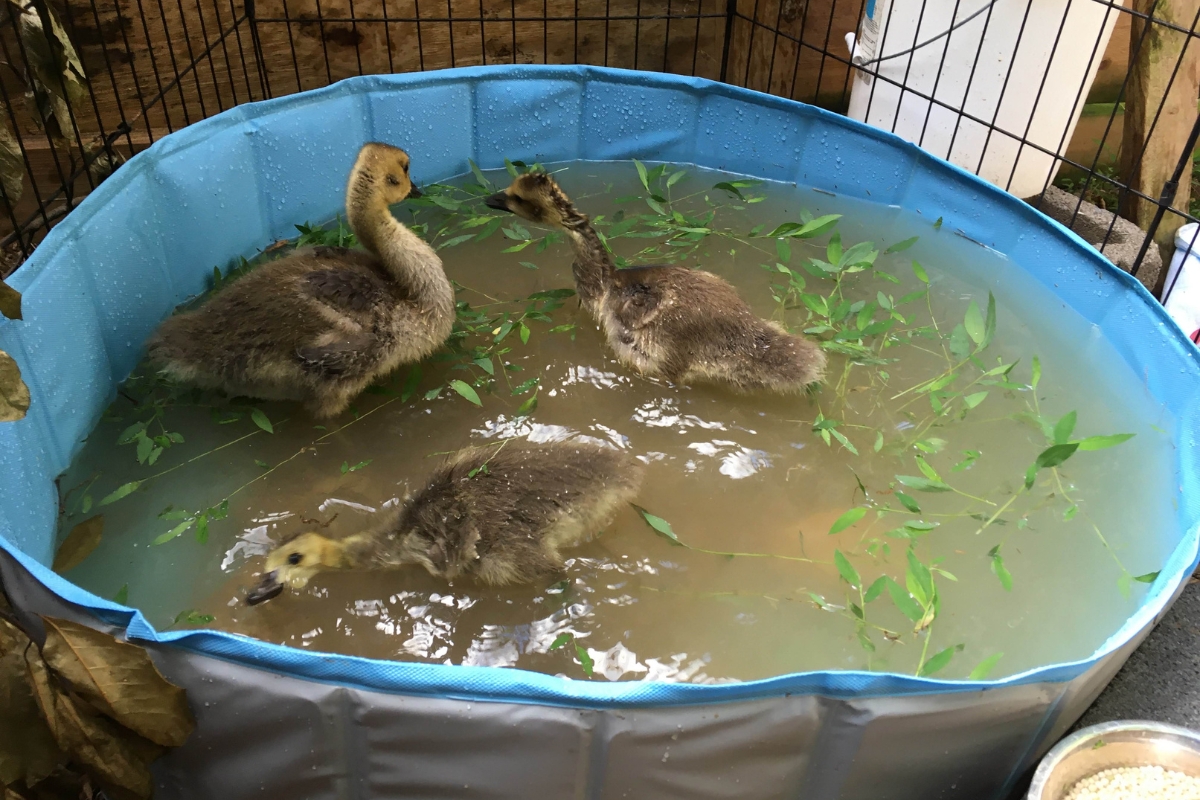AUGUSTA COUNTY, VA (Wildlife Center of Virginia) — On May 16, the Wildlife Center admitted a young Canada Goose from Augusta County. The bird was found in distress – a thin strand of fishing line had wrapped tightly around the gosling’s leg, cutting deeply into its skin. The rescuer carefully removed the line and immediately transported the bird to the Center for further treatment.
Upon admission, the veterinary team examined the gosling and found a severe constriction wound encircling the bird’s left leg. Swelling extended all the way to the foot, but radiographs confirmed there were no fractures. Still, due to the extent of the soft-tissue damage, the bird’s prognosis was guarded.
“Waterfowl like this gosling rely on strong, functional legs to swim, walk, and forage in the wild,” said Dr. Natalie, a veterinary intern at the Center. “A constriction injury like this can be devastating if it doesn’t respond well to treatment.”
The gosling was started on a combination of antibiotics, anti-inflammatories, and fluids, and was placed under close observation in the Center’s ICU. Over the next week, the swelling began to subside, and the young bird was able to move around more comfortably. However, the hallux – the backward-facing toe not connected to webbing – on the affected foot developed a severe infection – and did not improve. The veterinary team made the decision to amputate the damaged toe.
“An amputation like this has risks, but the hallux plays a less critical role in swimming and weight-bearing compared to the front toes. It means the gosling still has a chance of being released and doing well in the wild,” explained Dr. Natalie.
Fortunately, the gosling recovered remarkably well. After another week of careful wound management, the surgical site had healed, and the bird continued to move around with ease despite the missing digit. By May 27, the gosling’s injuries had completely healed. The bird is now starting to swim again, and is getting ready to return to the wild.

While this gosling survived its injuries, many animals affected by fishing line do not. Each year, the Wildlife Center admits dozens of patients—from turtles and raptors to waterfowl—who have become entangled or hooked in discarded fishing gear. Despite the best efforts of veterinary staff, more than half of these animals do not survive.
Fishing-line entanglement is a preventable threat. Anglers are urged to always properly dispose of fishing line, hooks, and other gear and to encourage others to do the same.
If you encounter an animal that is entangled or hooked, contact a permitted wildlife rehabilitator so the animal can receive prompt and appropriate care. For more information, visit: https://wildlifecenter.org/help-advice/wildlife-issues/fishing-tackle-threats-wildlife




